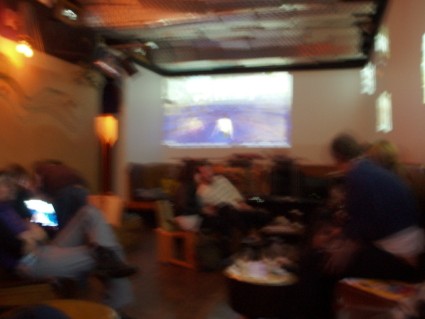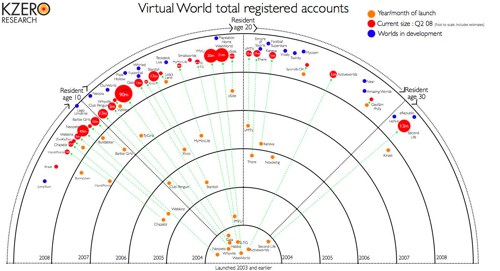 It’s no secret that Australian educational institutions are getting involved in Second Life, much like their counterparts overseas, but who is involved now and what is the purpose of their respective virtual presences within the Australian educational community?
It’s no secret that Australian educational institutions are getting involved in Second Life, much like their counterparts overseas, but who is involved now and what is the purpose of their respective virtual presences within the Australian educational community?
It’s been some time since the last wrap-up post concerning Australian education in Second Life; “First in, best dressed – is SL worth it for Aussie Universities?†was presented in March 15, 2007 so I thought it was time for a fresher look.
I located the sites and the names of groups created by each institution. This list represents the information we gathered from using the Search function in Second Life, the Google search engine on the web, plus information from past Metaverse Journal posts. URLs are for locations within Second Life:
Australian Film and Television School (AFTRS)
University of Southern Queensland (USQ)
Victoria University
RMIT
La Trobe University
Griffith University
Murdoch University
Gippsland TAFE (unreachable location)
Swinburne University (unreachable location)
Monash University (unreachable locations, and several groups)
Kangan Batman TAFE (group only)
Hobart College (group only)
Also definitely worth mentioning is Jokaydia. It is an educational project developed and run by Jo Kay, a resident of Australia (jokay Wollongong in Second Life). Jokaydia is also home to projects run for TAFE NSW. Jo is also responsible for at least the Swinburne build and several of the groups.
For the most part, these presences all have one thing in common: they are very difficult to comment on, either because they are not open to the public, or because they do not seem to be designed for public usage.
Jokaydia and the AFTRS presences are the exceptions: attractively presented, packed with useful information pertinent to their field of study, well sign-posted and equipped with maps and teleporters. These places seem to have been put together with the intention that the public have easy and informed access to them. The USQ, too, has put some thought into these factors, having clearly marked areas for shopping, career and educational information, and gatherings.
Of the remaining sites which are accessible by Second Life residents, the RMIT site alone seems to have been presented for the public to peruse, however sign-posting and information about the projects on display is sparse at best. The presentation is also quite haphazard, making the whole thing quite unnavigable. The rest appear to be representations of real-world sites, however they have little or information about either education or the build itself, and there is little that is interactive. Thus, they are broadly unsuitable for the general public.
Of course, there is very little information available at present about the not-for-public sites. With so little general information being available for each of these places or groups, it is also very difficult to determine their usefulness and suitability for the populations that they have presumably been designed for: the students and educators of each individual establishment.
While it is obviously early days, and the virtual worlds platform is a relatively new medium for education in Australia, I would prefer to see more information about education and more support for education of the general public. Take for example the excellent work seen at Harvard Law School’s island in Second Life. More information concerning the institutions and the courses and classes being offered by them, ideally with a focus on interaction, would potentially be beneficial, as would some sign that the spaces are actually in use.
With that in mind, I would like to contact the site owners and users to more fully explore how each individual institution has chosen to leverage the virtual worlds platform for the purposes of modern education.







Recent Comments